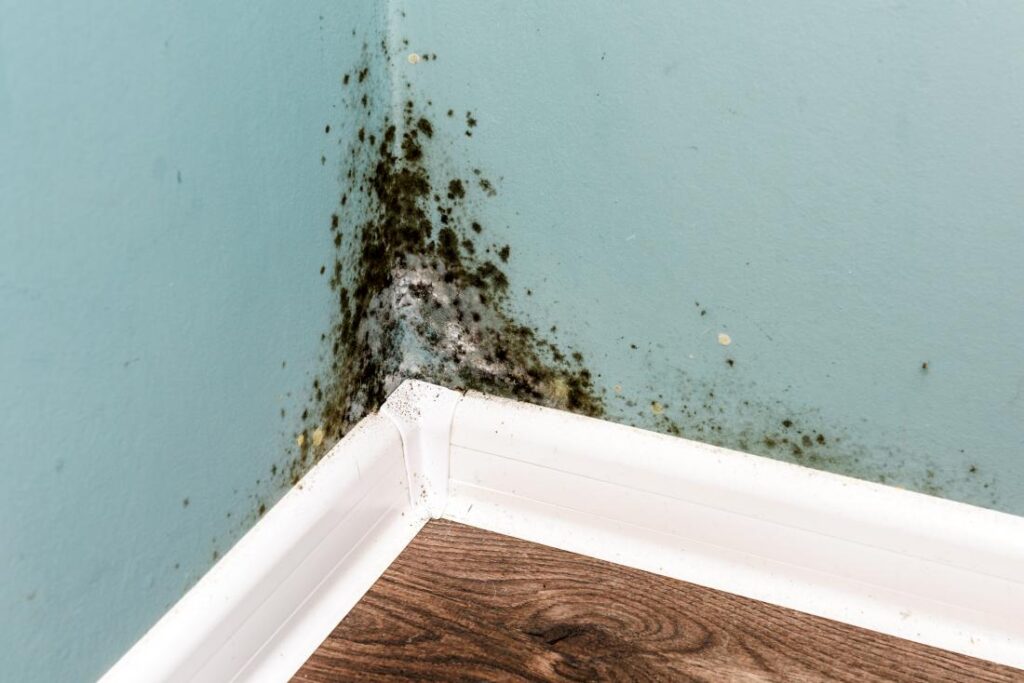The black mold you don’t want to come across is one that’s not just unpleasant looking, but also poses a health hazard for homeowners. Learn more about what this malicious fungi looks like and how we can remove it. According to a Fort Pierce mold testing company, long-term exposure to black mold in your property can be dangerous. That’s why it is recommended to hire a professional for a mold test instead of doing it yourself.
What Does Black Mold Look Like?
In a world where we’re all too willing to put up with anything if it’s not too ugly or difficult-to-repair, black mold has become an unfortunate reality for homeowners. Not only does this uninviting fungus smell terrible and can cause health problems in some people who are sensitive to its spores even though most will never know they were affected.
There is also potential loss of income when services need to be disrupted because your house hasn’t been able to understand that the problem lies within itself.
Black mold can be found in many places, but it’s most often seen on wet surfaces or those with high levels of humidity. The coloration may vary depending on how old the fungus is growing; some types turn green while others remain black as they age.
Black layouts also tend to grow more quickly than other colors do so if you see any unusual spots anywhere inside your house get rid right away because this could mean there’s hidden trouble ahead for both yourself and those around that area.
Click here – Shopify vs Magento – The Battle of Ecommerce CMS
The Black Stain Is A Result Of Water Damage.
Black mold can be difficult to spot, but it’s usually easy once you know what to look for. Black stains on your home will often present themselves in high moisture areas like carpet or drywall that have been flooded. If this sounds familiar then get ready because there may already be a problem with pesky fungal friends.
If you have a bathroom with frequently used tubs and showers, it’s important to make sure that the ventilation in your house isn’t being impeded by these fixtures.
In order for everything from hair products and toothpaste stains on our carpets to all of those pesky mold spores floating around inside every single one, we need an effective system at taking care of them as soon as possible which will prevent any major problems before they start.
If you live in a damp area, have problems with ventilation or high temperatures then the risk of black mold growing is higher. It can thrive anywhere there are conditions that favor its growth like kitchens and laundry rooms which often experience flooding due to leaks from pipes bursting under pressure.
Basements containing standing water after heavy rains leading up until they’ve drained out through cracks on their own.Mold thrives off moisture so any place where things aren’t keeping themselves clean will volunteer to root like spores for miles around.
Black Mold Is Commonly Found On Wood Surfaces Near Water Sources.
Black mold is not only found in damp basements but also can grow near water sources like sinks and toilets. It’s important to keep an eye out for this type of fungus because it may cause serious health problems if you decide to go ahead with repairs or renovations without taking appropriate precautions first.
Wood, like other plants and animals, are living things that have a surface area to protect. The same way they need protection from outside elements such as rain or temperature changes so do us humans who live in our homes every day.
Wood is highly porous which means the mold can grow on its surface while also growing roots deep within Black Mold Growth especially difficult because it’s both black in coloration but also these little critters called molds.
Click here – What Is A Pulpotomy?
Small Circles And Patches Are The Most Common Way Black Mold Spreads, But It Can Also Spread In Other Ways.
Black mold is often found growing in circular patterns, with large colonies that can range from less than an inch up to many inches across. It may also spread by way of concentric circles spreading outwards at different rates.
Mold usually grows more rapidly when it’s wet so any visible moisture on surfaces will cause this type hone enough growth for you if there’s standing water near your home or business then expect to see extensive coverage quickly.
If you see dark or black patches of mold, it’s likely that they’re not just dirt. These could be a sign of mildew in your home.
Mold can grow on anything from wood to drywall and even clothes if left unwashed for too long; but this type is particularly dangerous because its color goes unnoticed by most people who walk through their homes daily meaning there will probably never seem like enough time spent cleaning up after yourself.
Black mold can be found in a variety of different shapes and sizes, but when it’s dry its appearance will change drastically. The reason for this is that wet surfaces tend to have a slippery texture while those who have been fixed may appear powdery or sandy due their lack of moisture content.
Mold grows best during times where there are high levels of humidity which makes sense since water covers around 70% percent of our planet’s surface.
Black Mold Is Commonly Found In Drywall, Under Carpets, Or Lurking In The Corners Of Walls That Have Been Previously Flooded.
Black mold is one of the most harmful types, not just because it can cause respiratory problems but also due its ability to grow in some less obvious spaces like water leaks or improper ventilation. If you are planning to buy a new house then make sure it’s already free from mold. You can schedule your house checkup through any professional home inspector near your area.






